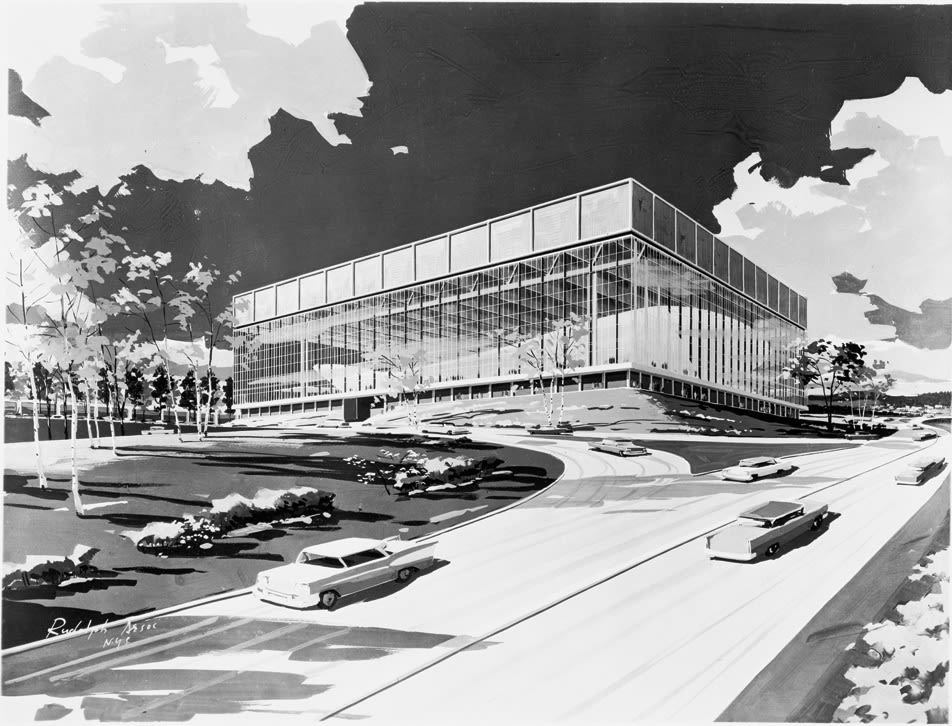Memorial Lane

Of the many civic battles that have shaped Portland over the decades, few match the one over Memorial Coliseum—not the recent brouhaha about whether to tear it down, but the debate that began fifty-seven years ago about where to build it in the first place.
Delta Park? South Auditorium? The west end of the Ross Island Bridge? All of these spots were contenders. Portland’s first sports and events venue set off a snarling, eight-year tug-of-war—complete with City Council flip-flops, three citywide votes, and several lawsuits. In the end, the site was yanked from the South Auditorium District and placed at the east end of the Broadway Bridge.
A half century later, Mayor Sam Adams and Commissioner Randy Leonard want to demolish the coliseum and replace it with a Triple-A baseball stadium to bring new life to the dreary Rose Quarter. "We’ve been studying the problem for fourteen years‚" Adams says of the surrounding quarter’s long-arrested development. "It’s time for action." But they forgot the step Portlanders always demand between chin-rubbing and punching the gas: a long argument over the map.
Consider the much-loved Pioneer Court-house Square: dozens of proposals and fifteen years of private and public clashes ensued before the project was built. Or think about Director Park, the "missing Park Block‚" soon to be christened just east of the Fox Tower. Designated as open space in nearly every city plan since Portland was platted, the block took 160 years to crawl from study to action.
Desperate to cut some ribbons before his possible recall election, Adams was moving at March 3 toward demolishing the coliseum until blogger Brian Libby goosed the architecture community into opposition. Now up for debate will be the Trailblazers and Baltimore-based Cordish Company’s scheme to transform the coliseum and the Rose Quarter into an entertainment complex on par with Kansas City’s Power and Light District, an eight-block nexus of restaurants, bars, and theaters.
But Cordish’s antics in Kansas City are already making Portlanders’ eyeballs roll. After enjoying $325 million in city-backed bonds and subsidies, Cordish turned around and sued the city over its taxes. Then the company banned knee-length T-shirts within the district and protested Kansas City’s proposed light-rail line. Early sketches for the Rose Quarter venture feature a salvaged Memorial Coliseum, but without the seating bowl or the glass walls.
Here’s where another history lesson is worth reviewing. Remember the rare moment of fast-tracking consensus back in the early ‘90s when the Rose Garden was built? Amid the glow of the Blazers’ runner-up championship finish in 1990—and under the dark cloud of owner Paul Allen’s threats to take the team elsewhere—city leaders paved the path to a new arena, study-to-action, in just two years.
Allen and his minions bullied the city into accepting an urban-design plan that chopped up the district into undevelopable fragments and blocked it off from adjacent neighborhoods with parking garages. Local urban designers warned of the consequences and even proposed more pedestrian- and development-friendly plans (after all, we know something about that here). The result? The colorless, traffic-snarled pedestrian nightmare we have now. Truly fixing the Rose Quarter (namely, rerouting streets and rebuilding the transit center) would cost more than $30 million, according to a 2001 city study. Ouch.
Note to Sam and Randy: maybe Portland’s slow, debate-happy way of making decisions works better than you think.



